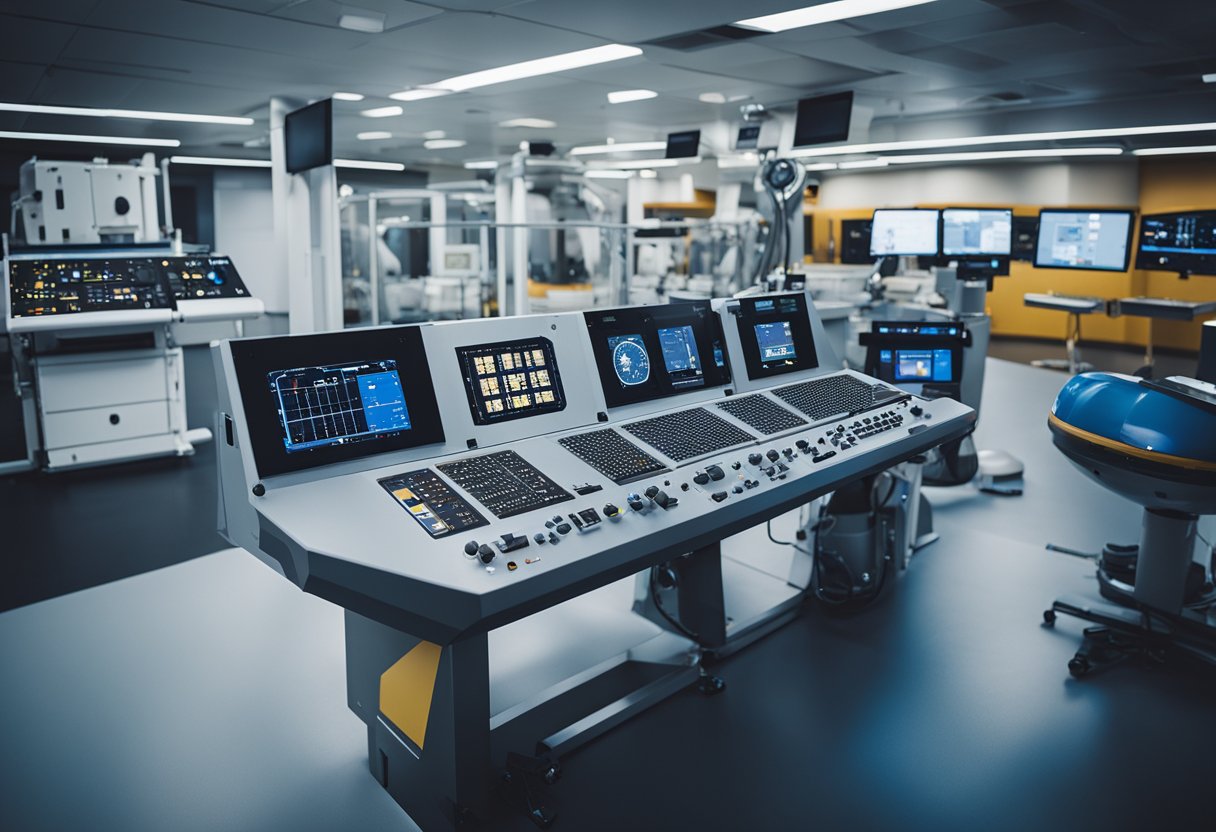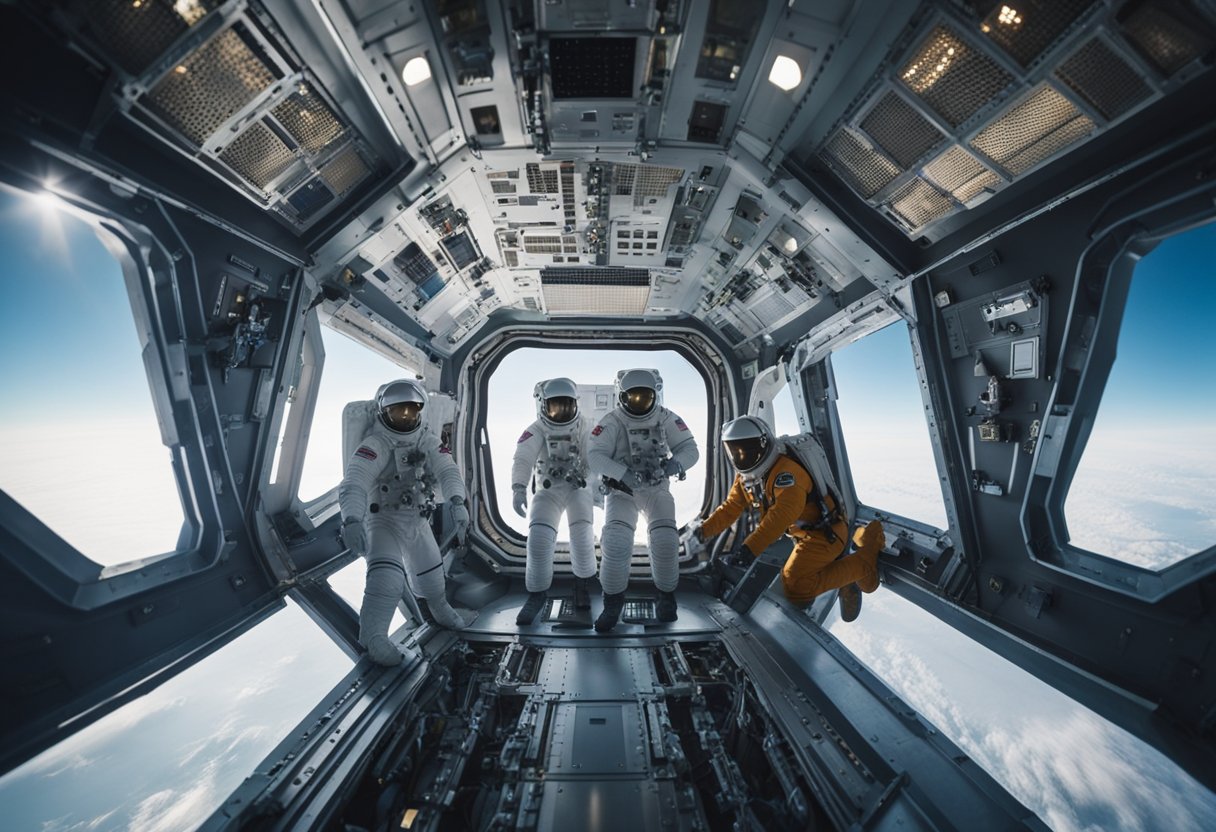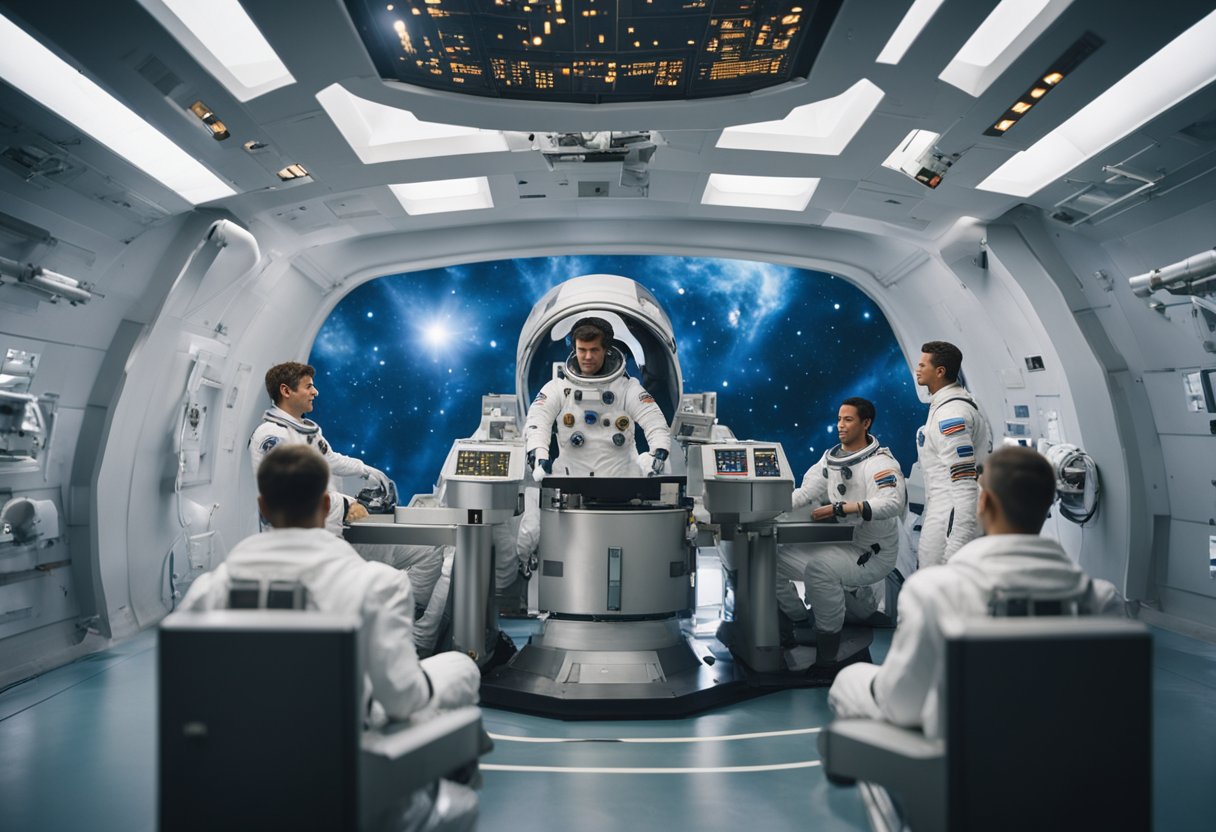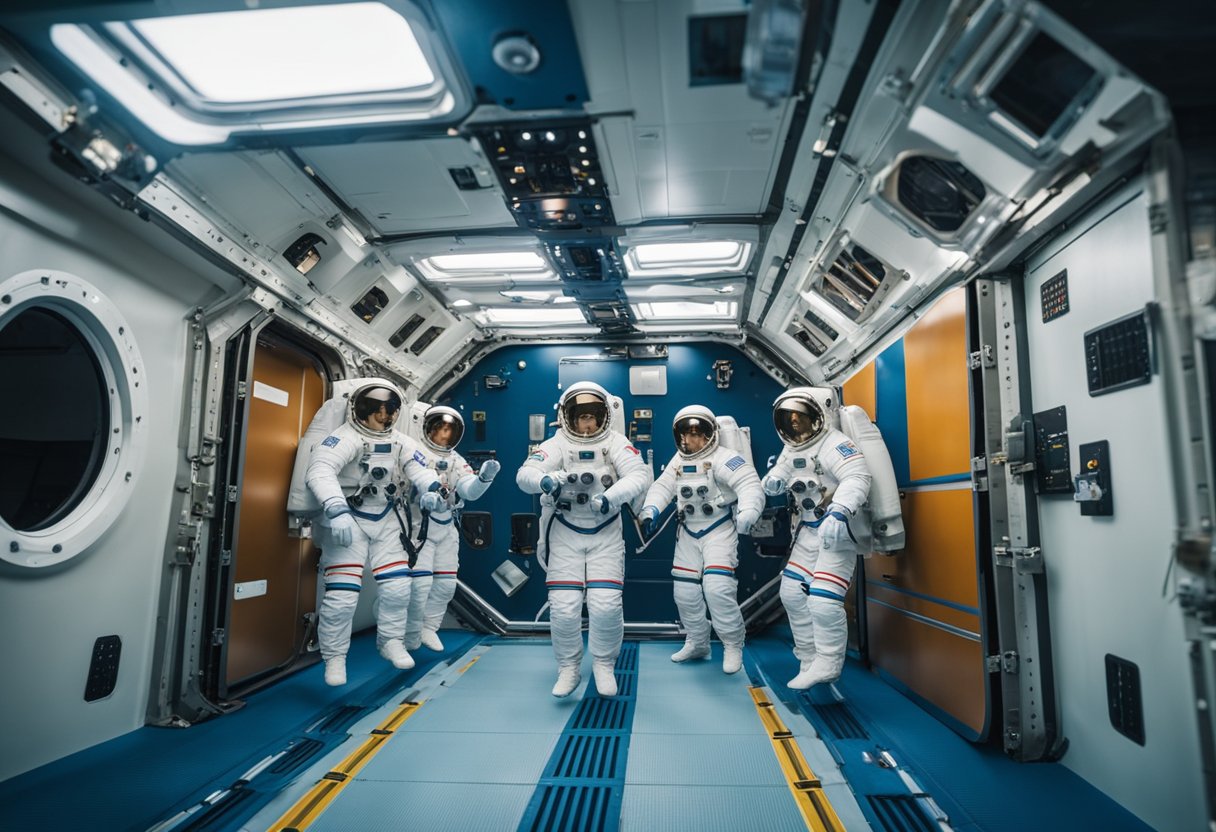
With the rapid expansion of the commercial space industry, the prospect of space tourism is turning from a distant dream into a tangible opportunity. For those with a sense of adventure and the means to pursue it, preparing for space travel is no longer limited to professional astronauts. We are now in an age where private citizens have the opportunity to leave Earth’s atmosphere, and with this opportunity comes the need for astronaut training for tourists. Tailored training programmes are established to ensure that these aspiring space travellers are safe, prepared, and able to make the most of their extraterrestrial journey.

The training covers a wide array of crucial skills and knowledge. Participants learn the science behind space travel, engage in simulations of weightlessness, and undergo rigorous physical preparation. Safety training also forms a foundational part of the curriculum, as tourists must be ready to respond to any emergencies that may occur during their spaceflight. As commercial spaceflight entities like Virgin Galactic and Blue Origin blaze the trail toward accessible suborbital trips, the programmes evolve to match the needs of these shorter yet significant excursions. Our own website, SpaceVoyageVentures.com, captures this momentum, showcasing the exciting progress as well as what’s on the horizon for space tourism.
As we delve into the history of space tourism, it’s important to acknowledge the substantial progress from the era of governmental space pioneers to the blossoming commercial space travel industry.
The chapter of commercial space travel began with the journey of Dennis Tito, the first private citizen to self-fund a trip to space. Travelling with the company Space Adventures in 2001, Tito’s landmark voyage to the International Space Station (ISS) kick-started the era of commercial spaceflights. Pursuing their own paths, entrepreneurs like Richard Branson’s Virgin Galactic, Elon Musk’s SpaceX, and Jeff Bezos’s Blue Origin have emerged as forerunners in the space tourism industry. Especially, Virgin Galactic’s suborbital flights have cemented Branson’s vision of making space accessible.
The space tourism market’s development is marked by varied ventures, ranging from suborbital experiences to plans for orbital holidays. Blue Origin’s New Shepard has offered a glimpse into short suborbital trips while SpaceX, leveraging its Falcon rockets, has taken a step further, aiming to enable longer-duration space travel. Pivotal to these developments are websites like SpaceVoyageVentures.com, which archive the history of space tourism and project a future where space vacations are within the grasp of many. The market’s trajectory suggests a continual growth, spurred by enhanced technologies and decreasing costs, paving the way for an era where space travel transcends beyond a privileged few to a broader audience.
In preparing for the exhilarating venture of space tourism, we must consider the fundamental components of astronaut training that ensure safety and success in our adventures beyond Earth’s atmosphere.
Stature: All astronauts must meet certain height requirements, with the necessity to be at least 147 centimetres tall to ensure compatibility with the equipment used during missions.
Health & Fitness: A critical aspect of training involves passing a rigorous physical examination. One must be in peak physical condition to withstand the stresses of space travel. This includes good visual acuity and maintaining normal blood pressure.
Education: Acquiring at least a master’s degree in a STEM (Science, Technology, Engineering, Mathematics) field is typically required for those looking at NASA’s astronaut program. However, the criteria may vary when considering private spaceflight companies.
Experience: Relevant professional experience post-degree or significant time piloting jet aircraft is essential. For example, NASA requires a minimum of 1,000 hours pilot-in-command time on jet aircraft.
Training for space tourism may differ from the protocols of agencies like NASA or the European Space Agency, but the basics of what makes an astronaut capable and ready for space travel remain consistent. These foundations help ensure that we, as space tourists, are well-prepared for the unique challenges posed by spaceflight.

In the burgeoning era of space tourism, we find a range of Commercial Astronaut Training Programmes designed to prepare private citizens for the novel experience of space travel. These programmes are tailored to ensure that participants are ready for the physical and psychological demands of space flight.
Virgin Galactic’s training regimen for SpaceShipTwo is tailored to ready adventurers for their suborbital test flights. Those enrolled will experience a variety of simulations and safety drills, all whilst familiarising themselves with the vehicle’s specifics. Their training ensures that participants are not just passengers but active contributors to the mission, understanding the full scope of the journey they are about to undertake.
Under the Blue Origin training programme, individuals prepare for their mission aboard the New Shepard spacecraft. With an emphasis on safety and mission protocols, trainees undergo thorough instruction on the craft’s operations and the potential scenarios they might confront during their ascent and time in microgravity. Blue Origin ensures that every commercial astronaut is adequately prepared for their voyage beyond Earth’s atmosphere.
Participants in SpaceX’s astronaut training can expect a comprehensive preparation process before embarking on missions involving the renowned Crew Dragon capsule. SpaceX’s programme encompasses everything from the intricacies of the spacecraft’s control systems to the physical conditioning required for space travel, ensuring that each excursion is not just successful but also safe. Our collective attention remains fixated on their continuing innovation and the test flights that edge us closer to a new spacefaring epoch.
SpaceVoyageVentures.com provides further insights into these exciting endeavours, capturing the essence of space tourism’s current and near-future possibilities for those eager to venture into the final frontier.
Before we explore the exhilarating experience of microgravity, it’s important to understand that space provides a unique environment for conducting a multitude of experiments. This is due to the absence of Earth’s gravity, which profoundly affects both human physiology and the behaviour of materials and fluids.
In microgravity, objects appear to float. This effect is due to the spacecraft and its contents, including us, being in a constant state of freefall towards Earth, creating the sensation of weightlessness. It’s a misconception that there’s no gravity in space; in fact, microgravity means that gravity still exists but exerts a much weaker force. This environment makes it possible to perform experiments that would be impossible under Earth’s gravitational pull, allowing us to better understand fundamental physical processes.
To ensure our safety and the success of our mission, we focus on engineering solutions that take the challenges of microgravity into account. For example, we engineer life support systems and equipment to function in a weightless environment where hot air does not rise, and fluids behave unpredictably.
Experiments in space have given us insights into a variety of disciplines from biology to materials science. The conditions of microgravity have allowed us to observe phenomena uncloaked by gravity’s dominance such as protein crystal growth, combustion, and fluid dynamics.
By experiencing microgravity ourselves during space tourism with ventures like SpaceVoyageVentures.com, we don’t just enjoy the trip of a lifetime, but we also participate in a larger narrative of discovery and innovation.
Embarking on a journey to experience the marvel of weightlessness is nothing short of extraordinary. To safely enjoy these moments, precise and methodical preparation is essential. Our training regimen equips participants with the know-how and physical acclimation necessary for the zero gravity environment they’ll encounter.
These flights, often known as “vomit comets,” utilise special aircraft patterns with a series of parabolic arcs to create brief periods of weightlessness. To experience this unique sensation, we utilise the services of companies like Zero Gravity Corp that provide modified planes capable of simulating a microgravity environment. During these parabolas, passengers experience the sensation of being weightless, allowing them to float, flip, and soar as if they were in space.
For a more sustained and controlled weightlessness simulation, underwater training sessions are integral. The Neutral Buoyancy Lab, akin to an immense swimming pool, is where astronauts practise extravehicular activities (EVAs). We conduct our underwater training sessions in facilities equipped with mock-ups of space stations or other spacecraft to provide the closest approximation of working in space.
Through these meticulously crafted programmes, we assure you are well-prepared to embrace the awe-inspiring scope of space travel.
Before we venture into the cosmos, it’s critical to understand the physical rigours of space travel. To ensure a safe and exhilarating journey, tourists must undergo meticulous physical preparations designed to withstand the unique conditions of space.
Exposure to high g-forces during launch and re-entry is one of the most intense experiences for space tourists. We use state-of-the-art centrifuge machines to simulate these conditions, allowing travellers to acclimatise to the sensations they will encounter. The centrifuge training exposes passengers to various g-force levels, ensuring their bodies can maintain proper blood pressure and function under the strain.
Our exercise regime focuses on preparing muscles for the microgravity environment. We engage in underwater simulations to mimic the sensation of weightlessness and demand a mastery of movements in three dimensions.
With dedicated G-Force Training and Space-Specific Exercises, we ensure our travellers are fully primed for their extraordinary journey among the stars. Discover more about how we prepare at SpaceVoyageVentures.com.
Before embarking on a space adventure, we ensure our tourists are well-prepared to handle emergencies and maintain safety aboard spacecraft. This preparation is vital for a successful journey.
The Basics of Egress: We provide rigorous training on how to evacuate the spacecraft promptly and safely in case of an emergency. This protocol involves:
Egress exercises are conducted regularly to perfect the procedures that might be required under duress.
Understanding Environmental Systems: It’s crucial for our passengers to know how to interact with the spacecraft’s life support systems. Training includes:
These systems are designed with multiple redundancies, but the knowledge of manual control adds an essential layer of safety.
Remember, safety and well-versed knowledge of equipment and protocols are paramount in space travel. By participating in our training at SpaceVoyageVentures.com, you’re not only preparing for an extraordinary experience but also ensuring that it’s a safe one.
Embarking on a journey to space has evolved from an astronaut-exclusive experience to one accessible to civilians, thanks to the burgeoning industry of space tourism. Suborbital flights offer a glimpse into the astronaut’s view, without the commitment of an orbit.
Lift-off: As we settle into the spacecraft, the engines roar to life, signalling the start of our ascent. During these initial moments, we are pressed back into our seats as the vehicle bursts from the launch pad with incredible force.
Powered Flight: The rocket’s engines continue to burn, propelling us upwards. We experience increasing g-forces as we rapidly climb through the Earth’s atmosphere and approach the Kármán line, the boundary of suborbital space sitting roughly 100 kilometres above sea level.
Microgravity: Once the rocket’s engines cut off, we enter a brief period of weightlessness. Here, we float free from our seats, experiencing the unique sensation of zero gravity, which is the hallmark of space travel.
Descent and Re-entry: Our spacecraft then begins its return to Earth. The descent is marked by a return of gravity, gradually at first, but with increasing force as we encounter denser atmospheric layers.
Landing: The final phase is the landing, which may occur via parachute, much like the space capsules of early space exploration, or a controlled descent to a runway, akin to the landing of a conventional aircraft.
Exploring suborbital space allows us, the space tourists, to experience the thrill of rocket travel, the tranquillity of the space environment, and the unparalleled view of Earth from above. For more information about what awaits the prospective suborbital traveller, visit SpaceVoyageVentures.com, a beacon for those interested in the latest developments and offerings in space tourism.

With the advent of the commercial space industry, we’re observing a historic shift. Private citizens are no longer mere spectators of space exploration; they’re becoming active participants. Through their roles, they’re influencing the market and enhancing the scope of space research.
In contributing to space research, private citizens are proving to be invaluable. Engaging in missions that were once the exclusive domain of government astronauts, these individuals are bringing fresh perspectives and funding to the field. Passenger involvement has played a critical part in broadening the type of research conducted in space, from biological experiments to technological demonstrations.
Visiting space as non-professional astronauts, these participants often carry out experiments or bring commercial projects to the International Space Station (ISS). Their personal investments and interest diversify the research portfolio, effectively boosting opportunities for scientific discovery. For instance, one could visit SpaceVoyageVentures.com to gain insight into the collaboration between private individuals and research entities.
The burgeoning market for these expeditions, propelled by private enterprises, enables a broader demographic to experience and contribute to space travel. As private citizens turn into astronauts, the narrative of space exploration expands to include not only scientific advancements but also the democratisation of access to space.
Additionally, the increased traffic to and from the ISS necessitates improvements in infrastructure and technology. The feedback and demands from paying customers are accelerating advancements in spacecraft design and onboard facilities. These developments, funded by the commercial space industry, are streamlining space travel and potentially paving the way for more sustainable and frequent missions in the future.
In leveraging this shift, we are beginning to see space tourism as not just a new adventure for the wealthy but as a bridge to furthering our understanding of the cosmos. Through platforms like SpaceVoyageVentures.com, private citizens are stepping onto the forefront of space tourism and research, marking the dawn of a new era in human spaceflight where everyone has the opportunity to contribute to the final frontier.

Living aboard the International Space Station (ISS) offers an unparalleled opportunity to experience life in microgravity while contributing to world-class scientific knowledge.
Aboard the ISS, we maintain a strict schedule, much like one would follow on Earth, yet tailored to the unique environment of space. Days are split between various tasks including maintenance, exercise, and scientific research.
Wake-Up and Morning Routine:
Work Period:
Exercise:
Meals and Downtime:
Evening Routine:
By adhering to this meticulous daily plan, we ensure that the valuable time aboard the ISS maximises both scientific advancement and the personal well-being of astronauts and cosmonauts.
In recent years, the commercial space industry has experienced significant growth, with market forecasts predicting an upward trajectory for space tourism. We are witnessing a shift from the realm of government-led space exploration to private enterprises spearheading the promise of space travel for non-professional astronauts.
Space Voyage Ventures is at the forefront, documenting the landscape of current and emerging opportunities for individuals dreaming of that stellar getaway. Here, we highlight several key points driving this nascent market:
| Factor | Influence on Space Tourism |
|---|---|
| Technological Advancements | Increased safety and comfort during space travel |
| Market Competition | Drives innovation and potentially lowers prices |
| Regulatory Changes | Could streamline processes or introduce new constraints |
Training for space tourists extends beyond physical preparation to include familiarisation with the spacecraft and simulated zero-gravity environments. Businesses like Space Voyage Ventures offer insights into what prospective travellers can expect, underscoring our commitment to making space tourism a reality.
As we look to the future, our collective efforts continue to shape a market where once-in-a-lifetime space adventures could become as commonplace as traditional holiday destinations.
In this section, we’ll address some of the most pressing queries that potential space tourists commonly have regarding astronaut training.
At the Kennedy Space Centre, tourists can engage in activities that simulate the actual experiences of astronauts. This includes practising docking skills, navigating simulated Martian terrain, and experiencing the physical sensations of space travel in a microgravity chair.
Training for space tourists is crucial for ensuring safety and maximising the experience. Although not all programmes may require it, many reputable organisations, like Orbite, offer preparatory courses for those keen on understanding the rigours of spaceflight.
Participants typically do not receive official astronaut recognition as professional astronauts do. The term ‘astronaut’ remains reserved for those who have completed government or private space agency training and have participated in space missions.
Individuals who have participated in the Astronaut Training Experience report high satisfaction, frequently citing the programme’s realism and educational value as highlights of their experience.
In addition to the Kennedy Space Centre, companies such as Space Adventure and other space tourism entities across the globe offer diverse training experiences, which aim to replicate the rigorous preparation of professional astronauts.
The investment in an Astronaut Training Experience is often deemed worthwhile by space enthusiasts for the unique insight it provides into the life of an astronaut, as well as the hands-on engagement with advanced space exploration simulations.